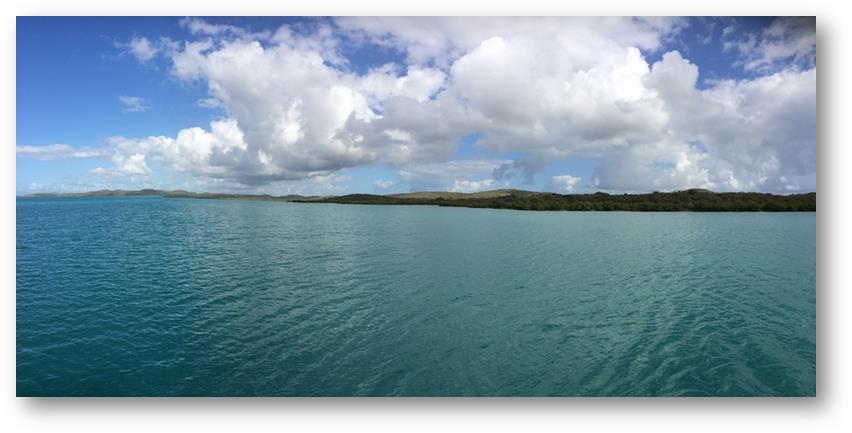Two Ensenada Honda's

Position: 18:07.138N 65:20.607W Date: Tuesday 18th March 2014 We decided to sail down to Vieques, the island south of Culebra. We had a cracking sail down to the eastern point, close hauled under full sail, before turning westwards along its southern coast. I had been so relaxed that I had forgotten to consult the pilot to see where we could stop for the night, but a brief inspection showed that the island had a promising looking bay rather confusingly also called Ensenada Honda. This is the same name as the bay we had spent the last couple of days in on Culebra. The local people clearly like this name so much that they used it twice. The current Ensenada Honda also had a reef strewn entrance that required careful pilotage, but with Eileen on the bow looking for isolated coral heads and me at the helm going slowly and looking closely at the charts and the depth gauge, we made it through without incident. In fact the least depth we encountered was 3.2 metres, more than enough for our draft of 2 metres. What we found was the most magical anchorage. It was huge, and for most of its area, once the entrance had been negotiated, quite deep. It was big enough to hold a substantial fleet of large ships. But we were the only boat there. We had the entire bay to ourselves. It’s shore was completely surrounded by mangroves, backed by woodland and low lying, scrub covered hills. The only sounds were that of the breeze and distant surf breaking on the reefs just offshore. There were no buildings ashore, other than a small derelict military building on top of one of the nearby hills. The eastern end of Vieques had, in its recent past, been used by the US military for bombing practice, but this had all apparently stopped a few years ago. I guess that with some of the more recent military campaigns they had had more than enough opportunities to test whether or not their weapons went bang. What was surprising was the relative absence of wildlife. We saw only a few fish, even though most mangrove areas act as nurseries for small fish. I guess as a consequence of this there were very few birds. Again this was in contrast to some of the other mangrove areas we have been to where there have been flocks of pelicans hoovering up small fishes. We saw a single turtle and one rather large jelly fish. After a couple of hours of isolation another boat entered but had the courtesy to anchor about half a mile away from us. There was no moon for the first few hours of darkness and the waters showed off one of their secrets, sparkling flashes of light from the various marine micro-organisms living in the water. There were two different kinds of bio-luminescence. The first we had seen many times before where small short lived flashes of light followed any disturbance created in the water. The second was more unusual. Every few minutes an opaque green glow would appear one or two feet below the surface and then radiate in a ball about three inches across for a few seconds, before slowly fading away. At any one time we could see several of these illuminations each separated by about ten feet of water. We could have watched for hours, but eventually the moon rose and dazzled out the display. |
